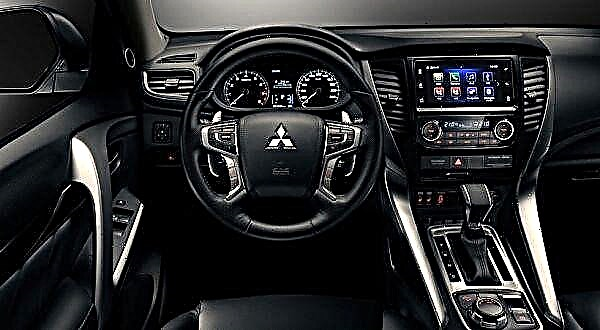Clutch malfunctions are perhaps the most unexpected and unpleasant, because in most cases the car is completely immobilized. About what kind of clutch malfunctions there are, as well as how to repair the clutch - in the article.

The content of the article:
- Typical malfunctions
- How to extend the term of work
- Conclusion
An important process in the movement of the car is the clutch. Regardless of the type of gearbox configuration, the clutch will always be available. Sooner or later, the movable mechanism fails and requires replacement, therefore, we will consider the most common malfunctions and the extension of the mechanism's life.
The most common failures of the clutch mechanism are:
- incomplete shutdown (in this case, the gears are shifted hard or do not change at all);
- the clutch slips when the pedal is released (a burning smell is felt, the car does not develop speed, it is difficult to climb hills);
- not smooth engagement of the clutch with jerks and vibration;
- noise in the clutch mechanism when pressing the clutch pedal;
- noise in the clutch mechanism when the pedal is released.
Clutch malfunctions

So, now we will analyze them in more detail and determine how to eliminate them.
The clutch can be mechanically or hydraulically driven. Incomplete disengagement of the clutch can occur due to a low level of brake fluid in the supply reservoir, as well as improper adjustment. The fluid level must be periodically monitored, and if it does not correspond to the norm, then you need to add brake fluid. If the fluid level in the feed tank is constantly decreasing, then this indicates a violation of the tightness of the clutch hydraulic drive (fluid leaks), as well as possible wear of the clutch slave cylinder. This malfunction can also occur due to the airing of the hydraulic drive system. To remove air, it is necessary to bleed the system.
Ideally, you should drive into a lift or overpass and carefully inspect the clutch slave cylinder for leaks. This is especially true in winter, if the liquid has not changed for a long time. In general, "brake" is very hygroscopic, which means it draws moisture well. Therefore, it must be changed approximately every three years.
It happens that after a long parking of the car, the speeds generally refuse to turn on. This is due to the fact that the driven disc is "prickly" to the flywheel and pressure disc. In this case, it is necessary to press the clutch pedal several times, and then try to turn on the speed again, if this does not help, then you can turn off the engine, turn on the speed, press the clutch pedal, tighten the handbrake and gently try to start the engine. If these procedures did not help, then you need to contact the service for repairing the clutch.

If the car does not pick up speed, is difficult to climb, this indicates that the clutch is not completely disengaged. This happens due to wear on the clutch disc pads, wear on the drive disc, or improper adjustment of the clutch actuator. When operating a car under normal conditions, clutch replacement is required up to 100 thousand kilometers.
Another clutch malfunction can be expressed in vibration and jerking when starting to move. The reason for this may be the deformation of the driven disc, as well as oiling of its friction linings. The latter can occur due to wear of the crankshaft oil seal or the input shaft of the variable gearbox. In order to check this, you need to leave the car on a flat, clean place overnight, and in the morning look under it from the front. Any oil droplets or puddles detected may indicate this malfunction.

Another clutch malfunction can be identified by opening a window and depressing the clutch pedal. If extraneous noise and rattling are heard from under the car, which disappears if the clutch pedal is released, then this indicates a malfunction of the release bearing. You should not hesitate with its replacement, tk. in the event of its complete breakdown (if it sticks), the clutch pressure plate will be destroyed, including the rest of the clutch parts, as well as damage to the clutch cover and variable gearbox housing, which will entail large financial costs. Therefore, when replacing clutch parts, the release bearing must also be replaced.
It can work properly, however, after several years of operation, the grease in it dries up and is expelled. Naturally, a dry bearing cannot work for a long time.
But if the clutch pedal is released, and the noise does not stop, then, most likely, this indicates the destruction of the driven or pressure plate, which in turn will require replacing these parts. It is also, of course, rare, but it happens that one of the bearings of the input shaft of the gearbox is buzzing.
How to preserve grip
In order for the clutch to last as long as possible, it is necessary to adhere to the following rules: at traffic lights and in traffic jams, turn off the speed and take your foot off the clutch pedal; neutral position and remove your foot from the clutch pedal, try not to use the car off-road and as a tug.

If you neglect these rules, then replacing the driven disc, and possibly the entire clutch, may be required much earlier. To check the wear of the driven disc, you must sharply press the accelerator in direct gear. If the engine "roared", and the car is reluctant to develop speed, a specific burning smell is felt, then this is the first sign that it is time to think about replacing the driven disc. Typically, once a clutch is burnt, it will wear out completely within a couple of weeks.
Conclusion
Thus, the clutch mechanism does not require much attention during operation, however, when the signs described above appear, it is necessary to replace worn parts as soon as possible. And if the car's mileage is more than 100 thousand kilometers and a long trip is ahead, then it is better to take care in advance and make an audit of the car's clutch mechanism.











